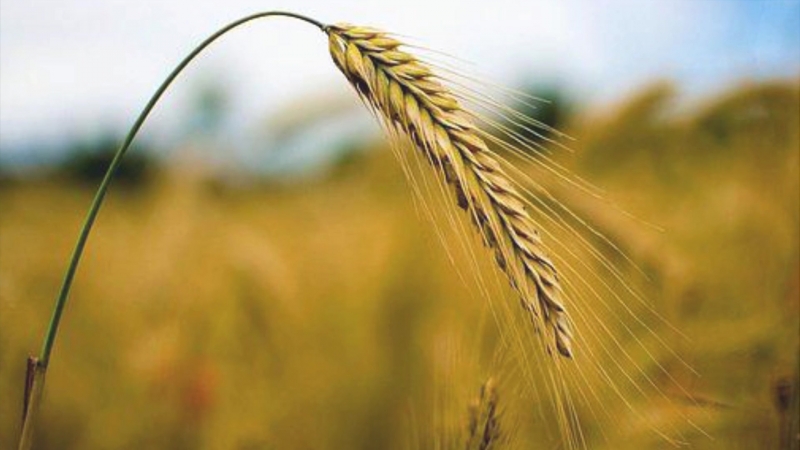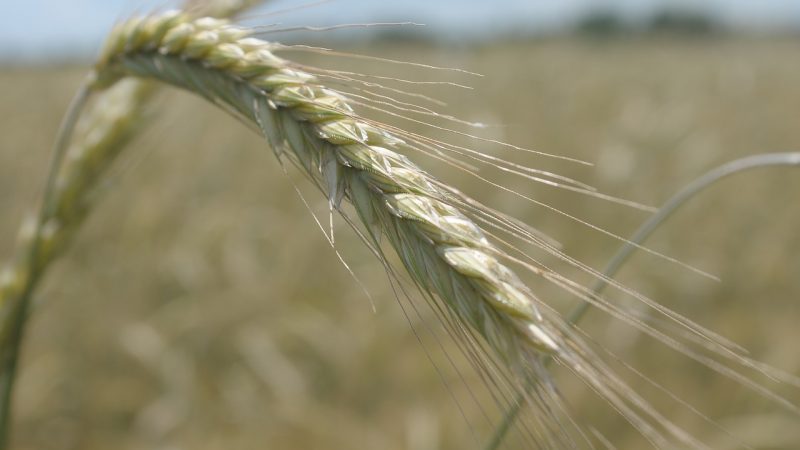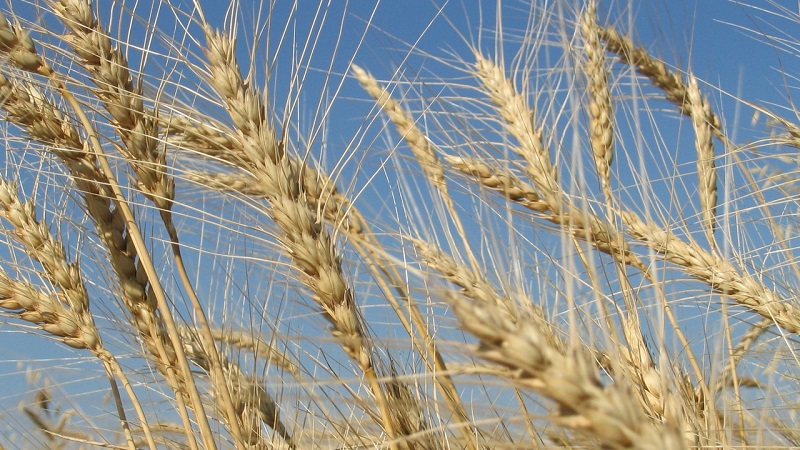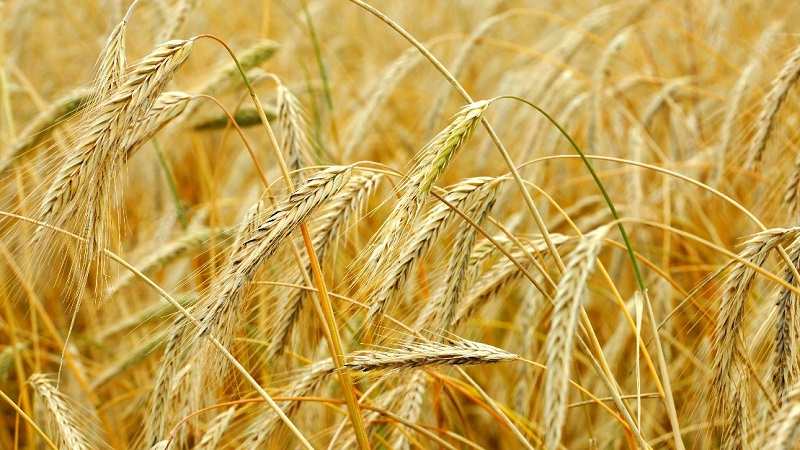What is sown rye and what does it look like
Rye is one of the most common cereals cultivated in the Northern Hemisphere. Once the plant was considered a weed, and now more and more areas are allocated for planting it. In some areas, rye even replaces wheat crops. The culture is used in the production of flour, alcohol, kvass and starch.
From the article, you will learn what rye looks like, what inflorescences, leaves (simple or complex) it has, monocotyledonous or dicotyledonous this plant, what is its leaf arrangement, and also about the peculiarities of growing rye in different climatic zones.
The content of the article
What is sowing rye
Rye is a herbaceous plant that can be annual, biennial and perennial, depending on the local climate and species. Rye is mainly cultivated in temperate and even northern regions, since the cereal is more cold-resistant than wheat.
Biological taxonomy of the species
Sowing rye belongs to the bluegrass (cereal) family. It is a cross-pollinated monocotyledonous plant from the genus of cereals.
Homeland of rye
The predecessors of modern culture were weed-field rye species. They grew actively in Central Asia, Transcaucasia and Southern Europe. Rye grains were found in ancient Egyptian archaeological excavations.
At first, farmers tried to get rid of the weed, but then they noticed its resistance to unfavorable conditions compared to wheat and barley. The gradual domestication of the cereal was crowned with success. Since the early Middle Ages, the culture began to be cultivated on the plains and mountainous areas in almost all parts of the continent.
Description of the plant
Rye has a number of advantages over wheat:
- hardy and unpretentious;
- has resistance to diseases and pests;
- resistant to lodging;
- has a more valuable vitamin and mineral composition.
Rye is an aggressive plant that can inhibit the growth of any weed. Below is a photo of the plant.

Root system
The root system is fibrous and powerful, extending up to 2 m deep, which contributes to successful cultivation on light sandstones. Thanks to its developed roots, the plant is able to extract nutrients even in unfavorable soil conditions.
Stem and leaves
The stem is straight and hollow, from 3 to 7 internodes inside... Closer to the ground, it is completely naked, slightly hairy under the ear. The standard height of cultivated rye is 80-100 cm, some wild species reach 2 m.
The foliage is up to 30 cm long, 2-2.5 cm wide. The surface is covered with fine pile, which protects the cereal from drought. Healthy young leaves are green, due to the waxy bloom they acquire a bluish tint. During the growing season, they become gray-green, and at the end of ripening they become golden yellow.
Ear

The rye inflorescence is an elongated spikelet with two or three inflorescences, which is held on a solid axis up to 15 cm long. The grain of rye is oval or elongated, with a transverse groove in the middle. The color ranges from light brown to yellow.
Seeds germinate even at a slight positive temperature. One tillering node goes underground, the other remains on the surface and becomes the main one. 4-8 shoots are formed, and under ideal conditions - 50-90.
Types of rye and its characteristics
In modern botany, rye is divided into several types:
- African;
- forest;
- mountain;
- Anatolian;
- Vavilov;
- Derzhavin;
- weed-field;
- sowing.
The latter is divided into spring and winter varieties.
Yarovaya
Spring rye is one of the sown forms of cereal, which is sown in spring. Harvested in late summer - early autumn.
These varieties use rarely, usually as a replacement for winter crops, which for some reason died or were damaged. The low demand for spring varieties is explained by their lower resistance to adverse environmental conditions and lower yields.
Climate and locality of cultivation

Spring rye is in demand in areas with severe winters. In regions with risky farming, winter crops have almost been abandoned, since they cannot withstand extreme frosts. In the fields of Yakutia, Buryatia, Chita region and Transbaikalia, the bulk of spring rye is grown in Russia.
Soil preparation
Fields for sowing spring rye are plowed in September-October, loosened with flat cutters 25-30 cm in depth. The best predecessors are rapeseed, clover, corn and perennial grasses.
In May, the soil is harrowed to a depth of 5 cm in order to loosen the soil and destroy weed shoots. The plot is filled with nitrogen fertilizers, phosphorus - when sowing.
Seed preparation and sowing
On the basis of laboratory research, the best lots of grain are selected for sowing. First, they are dried in drying chambers, then pickled to prevent fungal infections.
Sowing dates for spring crops depend on the climatic conditions of the area:
- in Siberia - May 15-20;
- in the Far East - May 1-20;
- in the forest and forest-steppe zone - in the second half of the month;
- in the steppe zone - in the last week.
The grains are sown mainly in a row method with a distance of 15-20 cm from each other. Embedding depth - 5-8 cm.
Growing
Spring crops consume nutrients intensively, but their root system is weaker than that of winter varieties. Timely feeding with nitrogen at the beginning of tillering will give an impetus for an intensive growing season. Foliar feeding with microelements will raise the immune system.
In the phase of the beginning of grain development, phosphorus and potassium are added. In the phase of 2-3 leaves, seedlings are harrowed.
During the period of ear formation, spring rye reduces the consumption of food from the soil; when it ripens, it completely stops. Harvested when full maturation of grain and dry stem is reached.
Winter
Winter rye gives a higher yield than spring rye. She is unpretentious and performs well where wheat will show low germination and vulnerability. Grain is rich in minerals and valuable acids, which makes rye flour products healthy and dietary.
Climate and locality of cultivation
Winter rye is grown from northern to southern latitudes. It is actively cultivated in regions with low temperatures, high humidity and few days of light. The Stavropol region is the leader in rye production.
Important! Due to its frost resistance, rye will germinate even at + 1 ° С, and the seedlings will withstand frosts down to -30 ° С.
Soil preparation
Winter rye loves potatoes, oat-lupine mixtures, flax, corn, and herbs as precursors.
Before sowing, the field is harrowed to a depth of 7-8 cm immediately after harvesting the previous crop. If the harvest was late, then the ground is first plowed 30 cm deep. A complex mineral mixture with a low nitrogen content is applied for the main soil cultivation.
Between plowing and sowing, it is kept for 1 month for the soil to settle. If a lot of weeds grew on the field, then they are treated with a herbicide.
Seed preparation and sowing
Before sowing, winter seeds are treated with chemicals to prevent and destroy pathogens.
Sow in an ordinary or narrow-row method, embedding grains to a depth of 5-7 cm. Approximate sowing dates for winter rye:
- Non-Black Earth Region - from August 20 to September 5;
- Siberia and Central Black Earth Region - from early August to September 15;
- southern regions - from late September to October 10.
The exact time is determined depending on the weather and cereal varieties, but the main rule is that sowing is carried out one and a half months before the establishment of stable cold weather.
Growing

In autumn, the primary tasks in growing winter rye will be seedling hardening, maximum development of the root system and tillering... Periodically, young plants and the site are checked for compliance with these parameters and corrections are promptly made.
In the spring, stagnant melt water is drained in the lowlands. After the topsoil has warmed up, it is harrowed to oxygenate, remove mold and prevent weed growth.
In summer, pest and disease control comes to the fore. At the tillering stage, they are treated with fungicides for prophylactic purposes. Insecticides are used for winter scoops.
Rye is harvested in the middle of the waxy ripeness phase of the grain. Raw materials ripen in dry weather in 2-7 days.
It is interesting:
Is gluten so scary and is it in rye?
Conclusion
Rye is prized for its ability to produce a stable crop in areas of risky farming. Grain is not only used as a valuable raw material in the bakery industry, but also successfully used as a green manure. Plots of land after rye become looser and more permeable, pests are partially displaced.
Russia is in second place in the world in rye cultivation after Germany.